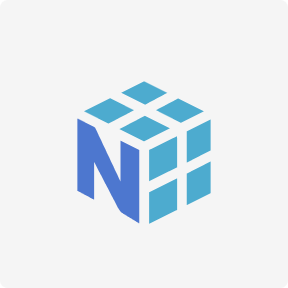In addition to the “Web API Frontend” plugin, you can manage some application settings using the “nopCommerce mobile app” plugin right from the admin panel of your nopCommerce webshop. For example, you can set up a slider on the main screen (specify what products to showcase) or transfer certain settings to the mobile application. E-commerce Android applications (as well as iOS) with vast catalogs may take forever to load if a user has a poor internet connection. In this case, offline mode, even less functional than online, will provide customers with a seamless user experience and improve your rating.

Logically, zoomers are all about innovation and outstanding, original approaches. Grabbing a zoomer’s attention is all about the design, novelty, and being in tune with the times. And this is where the employment of advanced technologies and hyped-up concepts helps a lot. A zoomer will surely pay more attention to a VR or AR-integrated app, an app with an extraordinary, feature-rich, dynamic interface, or a solution inspired by common happenings (e.g., the global pandemic). Since 2011, Dmitri has been helping business readers navigate the technology market through expert analysis and editorial work. At EPAM Startups & SMBs, Dmitri shows startups and SMBs across industries how to drive business value from their software engineering investments.
Market analysis
Make sure you get your whole team involved with testing and then hire a focus group within your target audience to get their opinions. If you don’t have imagery yet, app builders tend to have a range of stock images, so this is helpful in this respect. Do be careful – if you’re selling products, you need to ensure you have your own product images, so people know what they’re buying. An app builder is an online platform where you can go to build an app of any kind from scratch. They’re no-code which means you don’t need to have any technical abilities or experience, nor do you need to know much about apps as a whole. For example, if you sell solar panels, it might not be the best decision to make an app because it’s not a recurring purchase.

Here’s what you need to know about mobile commerce, how it differs from other types of commerce, and how to design a mobile commerce strategy for your business. Moz is an app that provides SEO (Search Engine Optimization) tools and resources to help ecom sellers improve their online visibility, drive organic traffic, and enhance their overall search engine rankings. Lessons include understanding the beauty business landscape, developing a beauty product, formulation, packaging, and branding principles. For instance, you can order software development from a company in India for ~$25/hour but receive communication problems because of poor language proficiency and mentality differences. The other extreme is to hire a development vendor from the U.S. for $150/hour but overpay a lot of extra finances for it. The truth lies somewhere between those two options, and that’s why an increasing number of customers choose to outsource software development to Northern Europe.
How to build an eCommerce app: key features, tech stack, and UI design (nopCommerce mobile app case study)
Statistically, around 79% of smartphone users buy things or services online using mobile devices in the past months. Eager to make an e-commerce app that will raise brand loyalty and increase customer databases? The whole world goes online; people prefer buying things or services on the web, and your e-commerce app might help them tackle that challenge. We created a B2B ecommerce app for Pepsi at a fraction of the cost.

Before you entrust an app development to your development team or a vendor, define a proper idea of your e-commerce application. Use the table above to outline what you need your app to be, making sure that everything falls in line with your business capabilities. The scope of your ambitions should define the app’s customizability, your budget, its extent of functionality and time-to-market, and so on. The timeframe to create an app varies depending on the time you have available to dedicate to the project and the development route you choose. When you use an app builder, you can build a launch-ready app in less than two weeks, but this doesn’t include the marketing strategy or competitor research. All told, the app process takes between six and nine months from conception to completion.
Manufacturing e-commerce platforms streamline the production process by converting raw materials into finished products and distributing them directly to consumers. These digital products help reduce the time and effort involved in traditional manufacturing processes. From making products to distributing, every process is time-consuming to perform.
Very often, people standing in lines or in traffic jams use their phones to pass the time. It would be great if, at that time, they could use the eCommerce mobile app to make the purchases they require. Growing competition in the global market motivates companies to use an innovative approach to create a positive consumer experience. Namely, to develop mobile applications for establishing mobile sales channels.

Enter Returnly, an app that specializes in making returns as hassle-free as possible. It provides a seamless and customer-friendly experience for managing product returns and exchanges, ultimately enhancing customer satisfaction and loyalty. Shippo’s integrations allow sellers to access competitive shipping rates and choose the best options. And with automation features and bulk shipping capabilities, sellers can save valuable time and resources while making data-driven decisions based on the robust analytics Shippo provides. With its comprehensive functionality, Shippo empowers ecom sellers to streamline their logistics, reduce costs, and provide a seamless shipping experience for their customers.
- Create your online store and promote it with built-in SEO, social media, and marketing tools.
- More demanded niches with wider TAs bring more profits which should point you more to investing and adjusting to niche conditions along the way.
- It’s a good idea to see how many independent competitors there are within your industry who have apps.
- It could be by simply adding in your logo and branding followed by your products, or it could be by switching out some of the features based on your market research.
The choice is yours and there is no right or wrong answer, but make sure you take time to choose the best solution for you. Toggle between your businesses in seconds and keep day-to-day operations mobile eCommerce app under your thumb. And unlike most Americans, who do most of their in-person shopping in eco-unfriendly cars, New Yorkers have access to a huge system of more sustainable public transportation.



